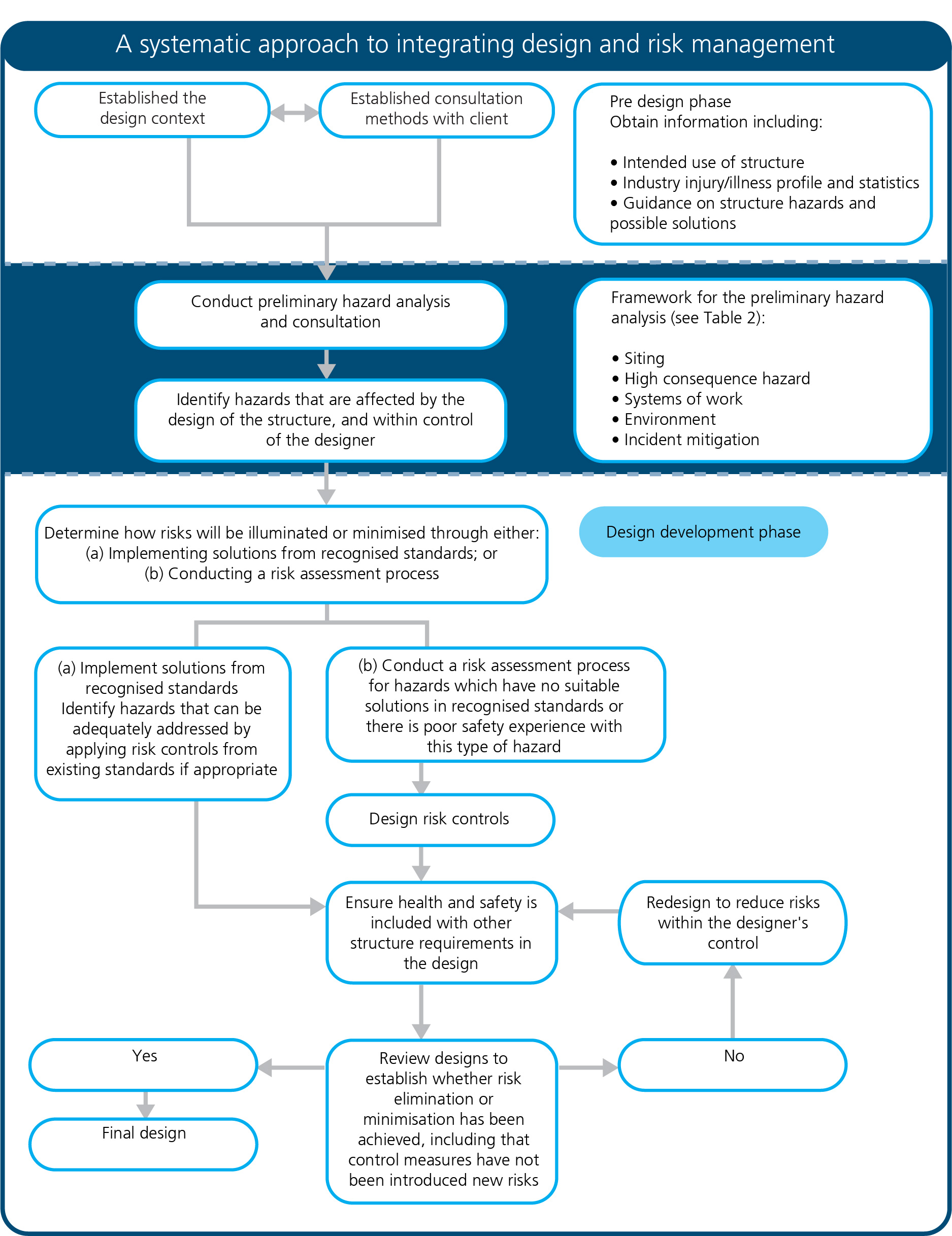SD2 - Key Elements of Safe Design
| Issue Date | Effective Date | Version |
|---|---|---|
| 01/09/2017 | 01/01/2018 | 1.0 |
Purpose
To ensure a systematic approach that integrates the aquatic risk management process in the design phases of an aquatic facility and encourages collaboration between the owner, operator, designer and builder of an aquatic facility.
Risk Management Approach
A risk management process is a systematic way of making a workplace as safe as possible and it should also be used as part of the design process as outlined in the Guidelines for Safe Pool Operations – Risk Management.
Designers should also consider how their design will affect the health and safety of those who will interact with the aquatic facility throughout its life.
Communication and Consultation
A safe workplace is more easily achieved when people involved at the design stage communicate with each other about potential risks and work together to find solutions. By drawing on the knowledge and experience of other people, including workers, more informed decisions can be made about how the aquatic facility can be designed to eliminate or minimise risks.
If an owner or operator of an aquatic facility is commissioning an aquatic facility or refurbishing an existing aquatic facility, they should consult their workers who will be using the workplace, because their health and safety may be affected by the new design.
Consulting with Other Duty Holders
Often, the design process will occur over various stages and involve different people who make financial, commercial, specialist or technical decisions over a design, for example, owner or operator of an aquatic facility, architects, project operators and interior designers.
Such decisions may positively or negatively affect the safety of a building. In these circumstances, each party will have responsibility for health and safety in the design stage.
So far as is reasonably practicable, the duty holders involved should consult each other on the hazards and risks associated with the building and work together on appropriate design solutions. This would include an owner or operator of an aquatic facility co-operating with a designer in changing a design to address a health and safety risk identified in the design process.
Information Transfer
Key information about identified hazards and action taken or required to control risks should be recorded and transferred from the design phase to those involved in later stages of the lifecycle.
Communicating this information to other duty holders will make them aware of any residual risks and minimise the likelihood of safety features incorporated into the design being altered or removed by those engaged in subsequent work on or around the building or aquatic facility.
The designer should also, so far as is reasonably practicable, provide this information to any person who carries out activities in relation to the aquatic facility if requested. This should be documented in a Safety Report and include such things as:
- Making notes on drawings, as these will be immediately available to construction workers
- Providing information on significant hazards, as well as:
- Hazardous substances or flammable materials included in the design
- Heavy or awkward prefabricated elements likely to create handling risks
- Features that create access problems
- Temporary work required to construct or renovate the building as designed, for example bracing of steel or concrete frame buildings
- Features of the design essential to safe operation
- Methods of access where normal methods of securing scaffold are not available
- Any parts of the design where risks have been minimised but not eliminated
- Noise and vibration hazards from plant
Design for Safe Maintenance
Risks relating to the cleaning, servicing and maintenance of an aquatic facility should also be considered to include things such as:
- Designing to avoid dirt traps
- Designing anchorage points for when maintenance needs to be taken at height or above a pool
- Using durable materials that do not need to be recoated or treated
- Access to confined spaces
Modification
Design is not always focussed on the generation of an entirely new structure. It can involve the alteration of an existing structure which may require demolition in part or whole. This ensures that any new hazards and risks are identified and controlled, and that the safety features already incorporated into the design are not affected. Additional design issues identified in these phases should be passed back to the designer.
Any modification of a structure requires reapplication of the processes detailed in the design phases. Consultation with professional engineers or other experts may be necessary in order to assess the impact of any proposed modifications or changes in design
References
- Safe Work Australia – Code of Practice – Safe Design of Structures
- Building Code of Australia - 2006. Australian Building Code Board.

